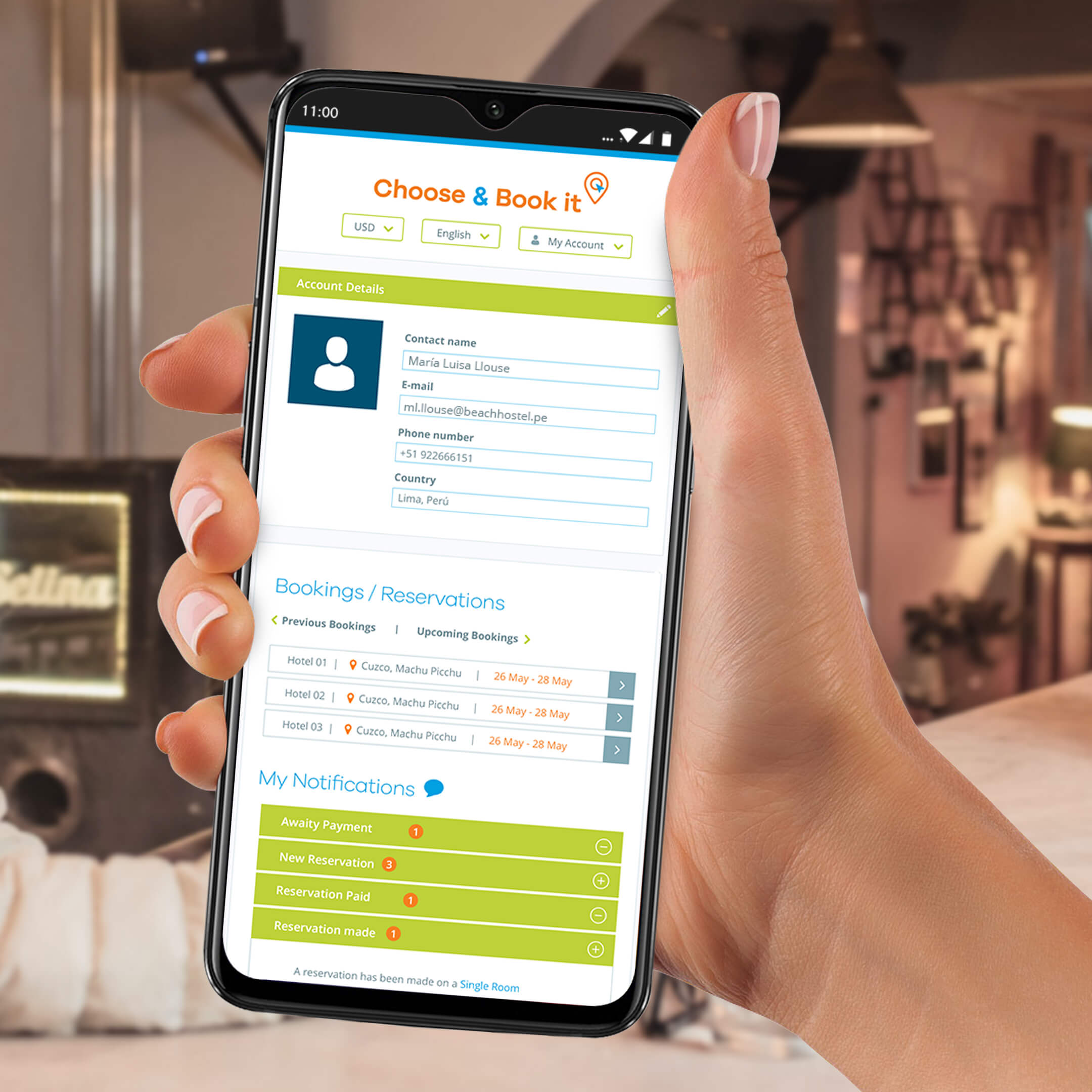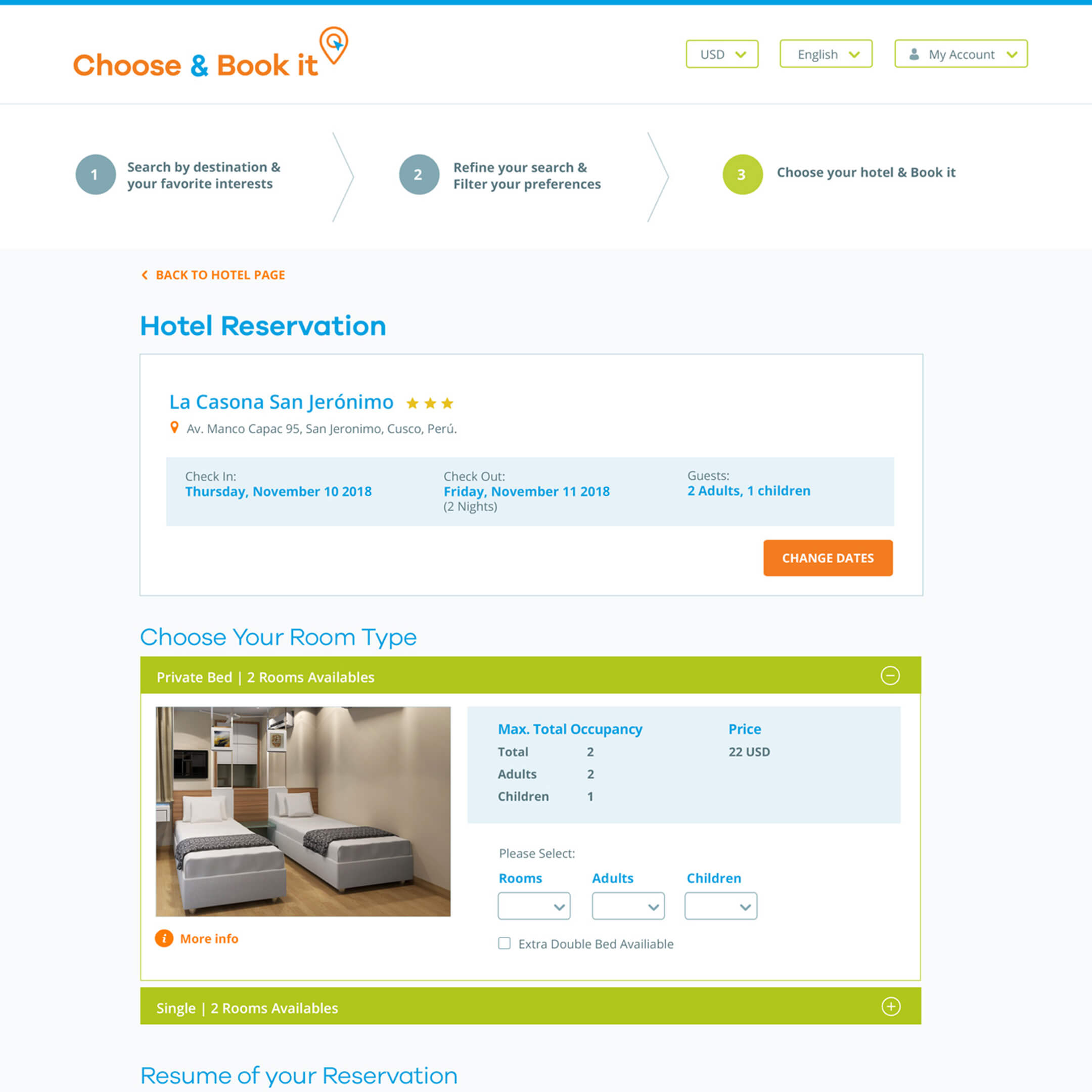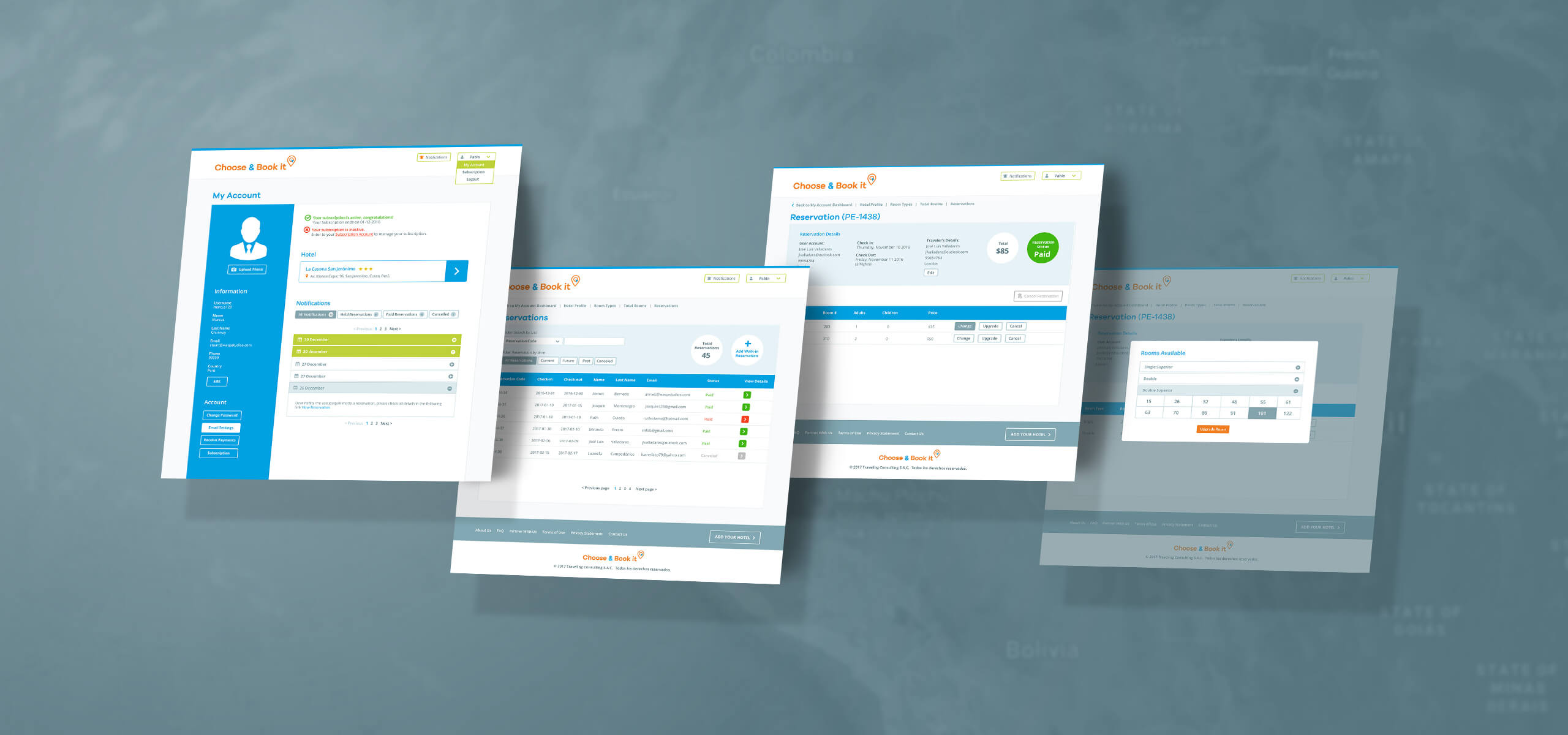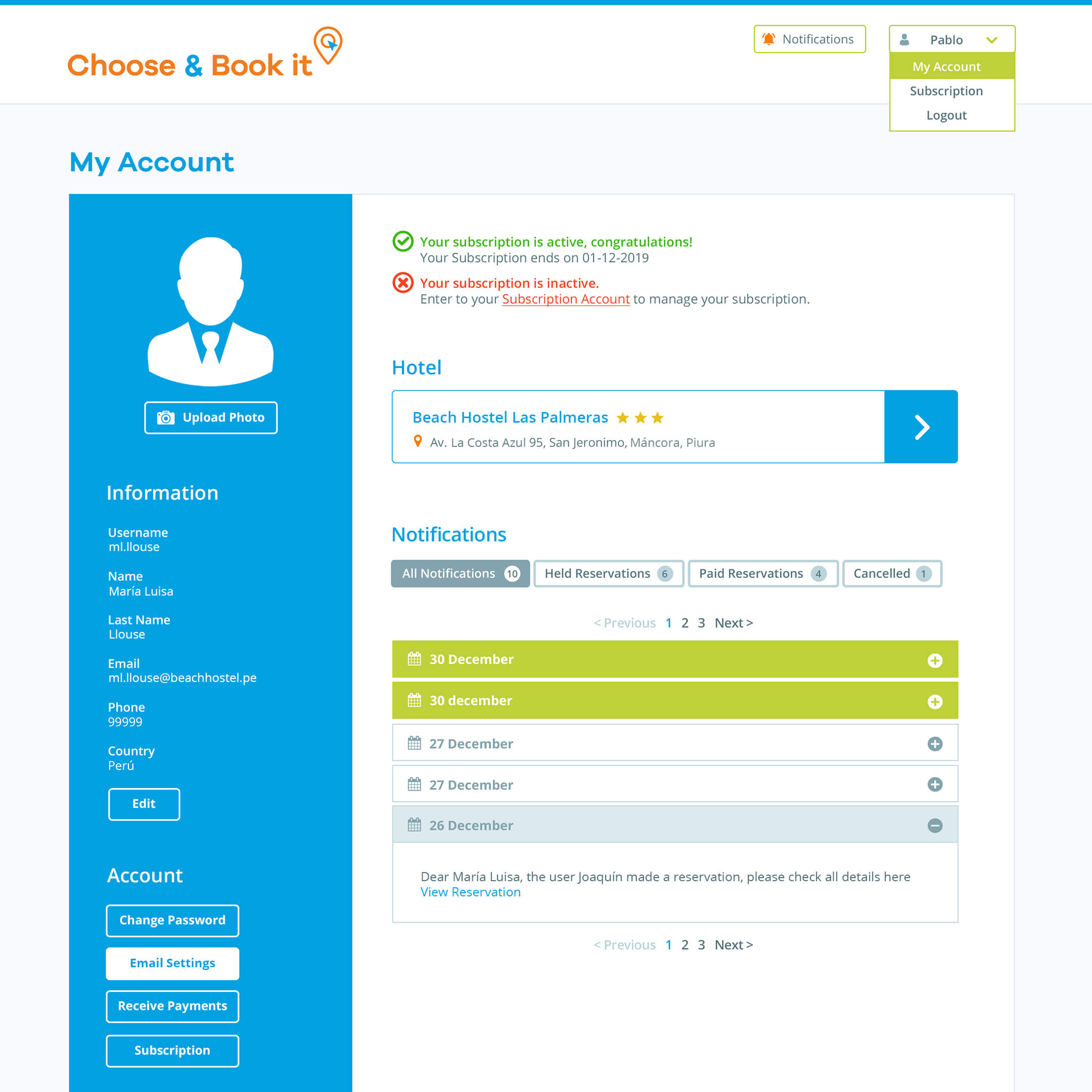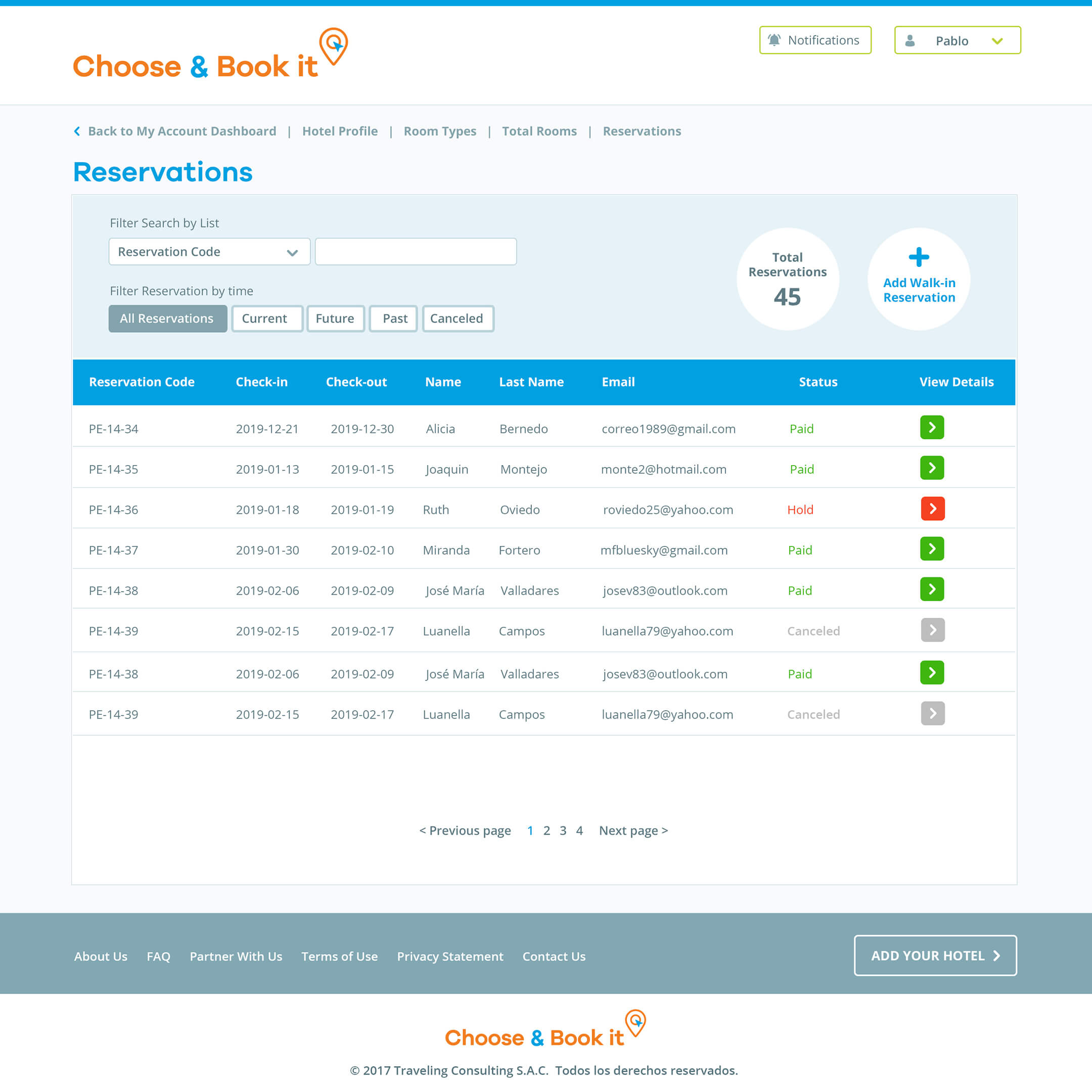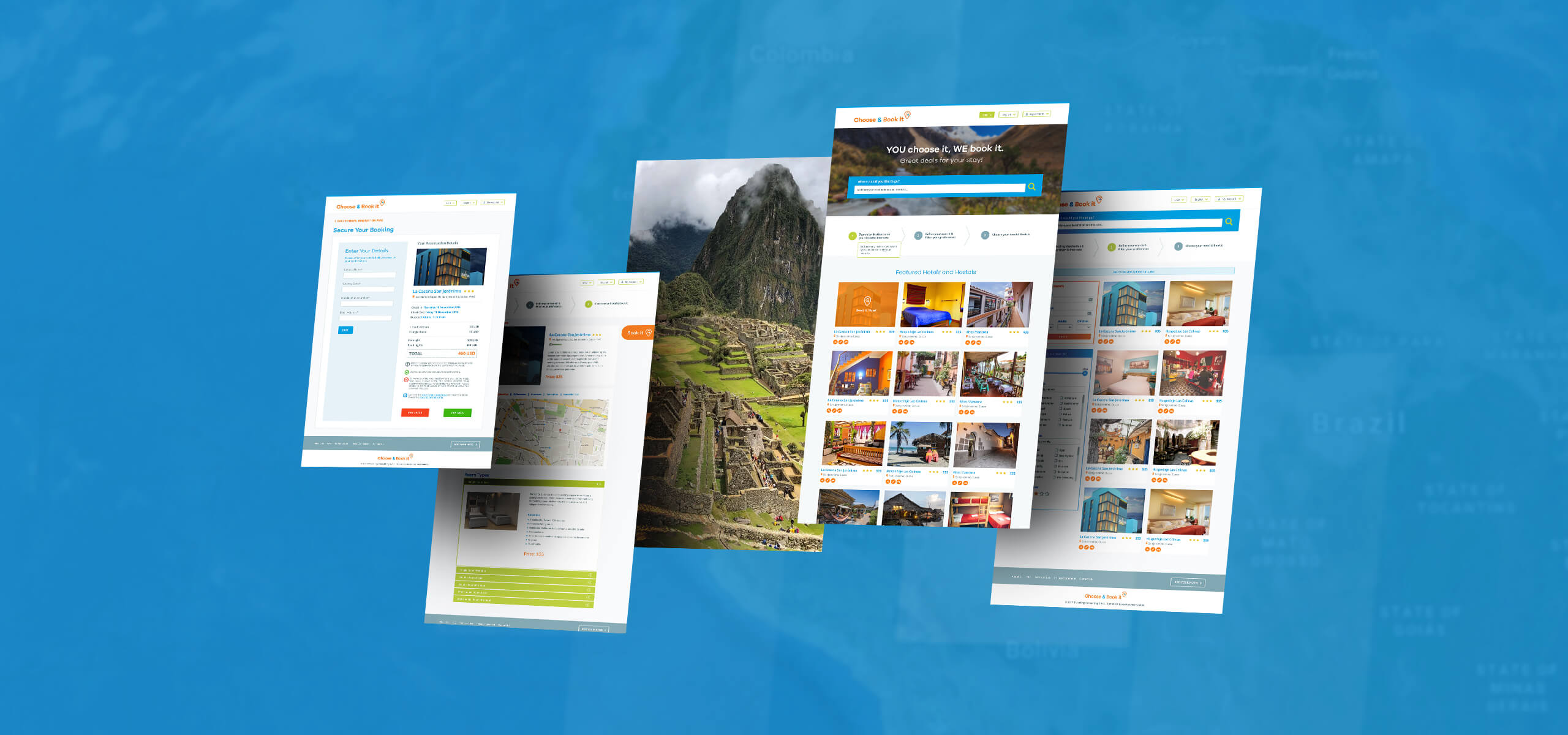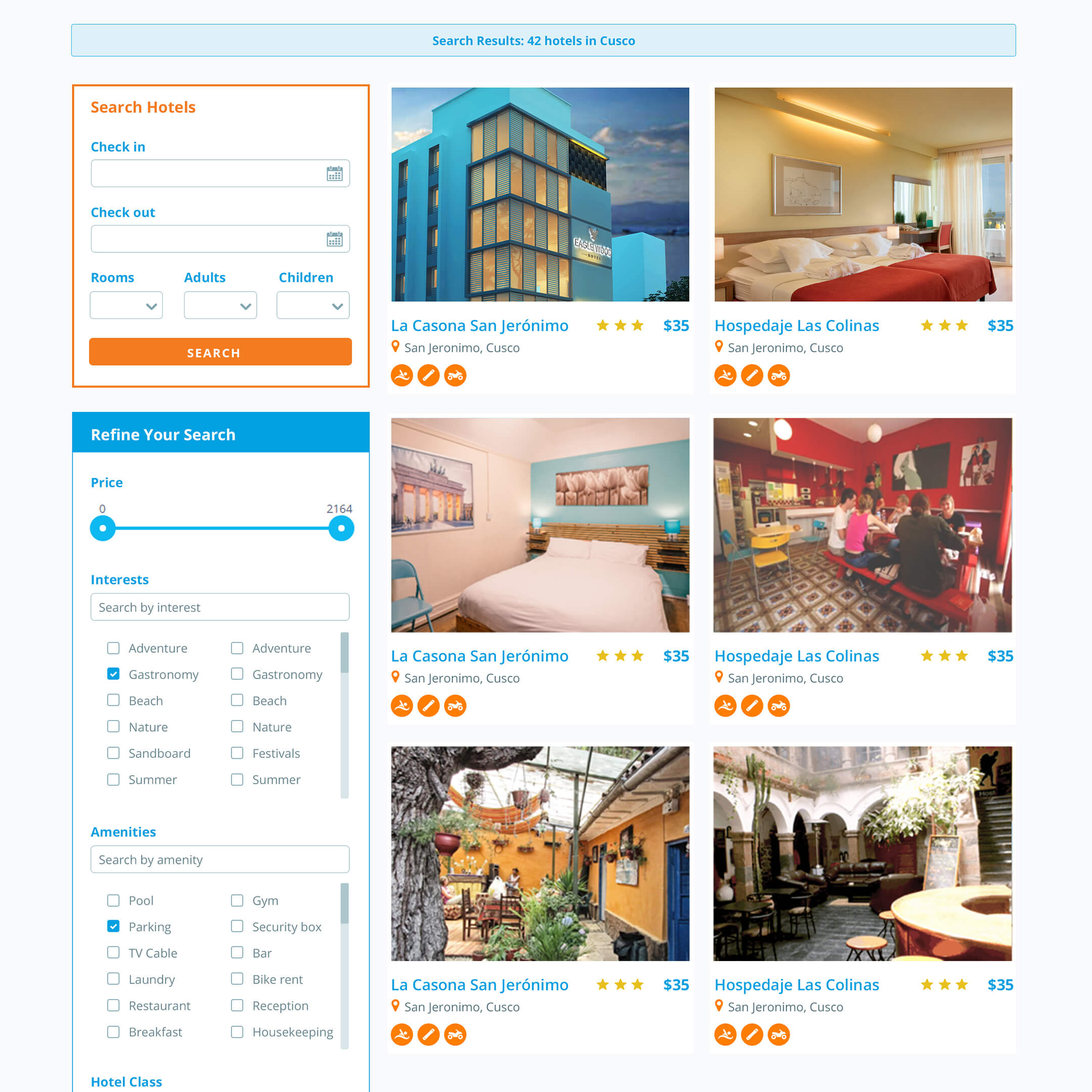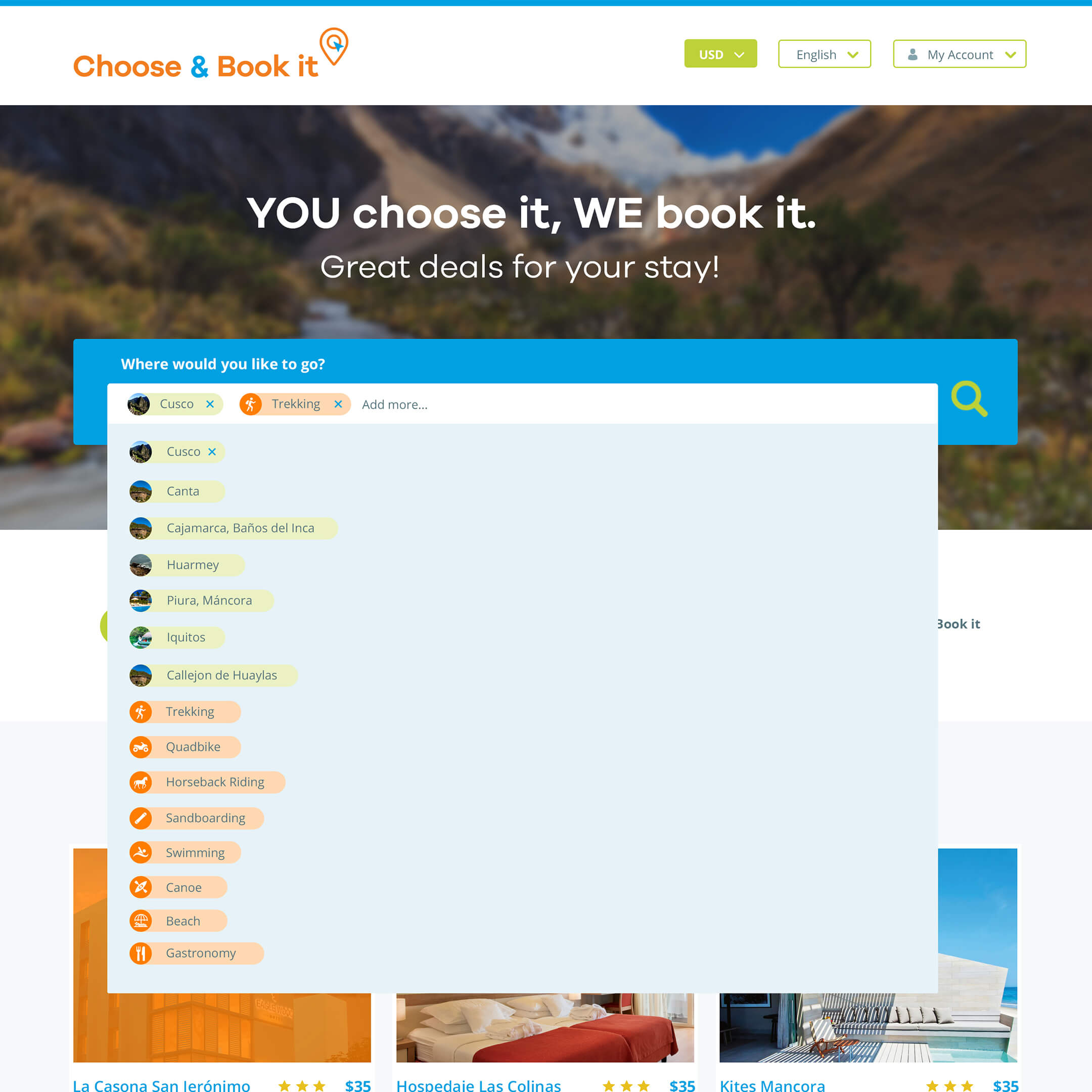Our client’s niche market is the tens- if not hundreds-of-thousands of non-computerized small 3-star-and-under hotels and hostels across Latin America, though with an initial focus on Peru. While many of these hotel and hostel owners had listed their businesses on the dominant booking platforms (such as Booking.com), few, if any, had a connection between online platforms and internal records. Most on the lower end would keep a paper-based list or agenda detailing future bookings. These would be a mix of walk-in bookings and online bookings that they would then have to write down. They also often lacked a physical means to accept international credit cards from walk-in guests… and backpackers notoriously run out of cash.
The solution was to build an online reservation SaaS system that would function as both an internal system for the hotel and as a platform for potential customers. For hotel owners it would allow them to manage their hotel, room types, room occupancy status and reservations. It would allow them to automatically assign guests to available rooms while having this be reflected immediately in availability status. It would record the guests’ details automatically and make that information instantly available through what they’d consider to be their internal management system. They could still manually add bookings from other platforms and they would also be able to process walk-in credit card payments via an admin interface or by directing guests to open a URL on their mobile device.
Conversely, for travellers looking for hotels and hostels specifically in the 3-star and under range, they would have an online booking platform featuring only options that are appropriate for their needs, with details specific to this niche. This means rather than listing amenities like room service, we instead show en-suite bathroom availability, or whether rooms face busy streets. With a focus on tourist travel, specific tools that aren’t found on other platforms would be developed to help sort through and filter hotels. This platform would be marketed specifically as a hotel reservation website for backpackers, young people and budget travellers.

